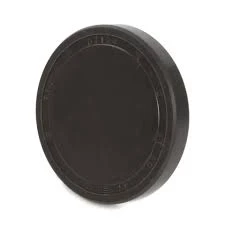Mobile:+86-311-808-126-83
Email:info@ydcastings.com
Investment Casting Techniques for Valve Body Manufacturing and Applications
The Role of Investment Casting in Valve Body Manufacturing
Investment casting, a highly regarded manufacturing process, has gained substantial traction in the production of valve bodies due to its ability to create intricate and precise components. This sophisticated method, also known as lost-wax casting, enables manufacturers to meet the growing demands for high-quality, durable, and complex valve designs across various industries, including oil and gas, automotive, and aerospace.
Understanding Investment Casting
Investment casting is a process that begins with creating a wax model of the desired valve body. The wax pattern is coated with a ceramic shell, which, once hardened, forms a mold. The wax is then melted and drained away, leaving a hollow ceramic shell ready to receive molten metal. This method allows for exceptional dimensional accuracy and surface finish, making it an excellent choice for producing complicated shapes with intricate details.
The investment casting process poses significant advantages over traditional manufacturing methods, particularly in the realm of valve bodies. Given the strict specifications that characterize valve designs, investment casting facilitates the production of lightweight, high-strength components that can operate under extreme conditions and pressures. These attributes are critical for valves used in various applications, where reliability and performance are paramount.
Advantages of Investment Casting for Valve Bodies
1. Precision and Complexity One of the standout advantages of investment casting is its ability to produce components with high precision and complex geometries. Many valve designs require fine features and intricate internal structures that would be challenging to achieve with other casting methods or machining processes. Investment casting produces such features without the need for extensive secondary machining, which can improve efficiency and reduce costs.
2. Material Versatility Investment casting offers a wide range of material options. Manufacturers can utilize various alloys, including stainless steel, carbon steel, and nickel-based alloys, which are crucial for valve applications exposed to corrosion, wear, and extreme temperatures. This versatility allows engineers to select the most appropriate materials for specific applications, further enhancing the valve's performance and lifespan.
investment casting valve body

3. Reduced Waste The investment casting process is inherently efficient, leading to reduced material waste. Since the process involves creating a mold that closely matches the final form of the valve body, there is less excess material to trim away after casting. This not only conserves resources but also contributes to lower production costs and a smaller environmental footprint.
4. Consistency and Repeatability The controlled nature of the investment casting process leads to high levels of consistency and repeatability in the final products. Engineers and manufacturers can rely on standardized processes to produce valve bodies that meet stringent industry standards without significant variability. This reliability is crucial, as inconsistent valve performance can lead to operational failures and safety hazards in critical applications.
Applications in the Industry
Valve bodies produced through investment casting are widely used in several critical applications. In the oil and gas industry, for example, robust and reliable valves are essential for controlling the flow of oil and gas in pipelines. Investment-cast valve bodies can withstand the harsh conditions associated with extraction and transportation, ensuring safety and efficiency.
Similarly, in the automotive sector, manufacturers utilize investment casting to produce valve bodies for various systems, including fuel systems, exhaust systems, and hydraulic controls. The ability to create lightweight and strong components translates to improved fuel efficiency and reduced emissions in vehicles.
In aerospace, where weight savings and material performance are vital, investment casting plays a crucial role in producing valve bodies that can handle extreme pressures and temperatures during flight operations. Manufacturers can achieve the necessary certification standards, ensuring that these components are reliable and safe for use in this demanding environment.
Conclusion
Investment casting has revolutionized the way valve bodies are manufactured, providing solutions that enhance precision, versatility, and efficiency. As industries continue to evolve and seek increasingly sophisticated components, the importance of investment casting in valve body production will only grow. By leveraging this advanced manufacturing technique, companies can meet market demands while ensuring the high-performance standards required in safety-critical applications.
-
Why Should You Invest in Superior Pump Castings for Your Equipment?NewsJun.09,2025
-
Unlock Performance Potential with Stainless Impellers and Aluminum End CapsNewsJun.09,2025
-
Revolutionize Your Machinery with Superior Cast Iron and Aluminum ComponentsNewsJun.09,2025
-
Revolutionize Fluid Dynamics with Premium Pump ComponentsNewsJun.09,2025
-
Optimizing Industrial Systems with Essential Valve ComponentsNewsJun.09,2025
-
Elevate Grid Efficiency with High-Precision Power CastingsNewsJun.09,2025











